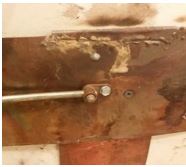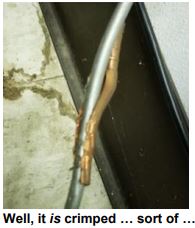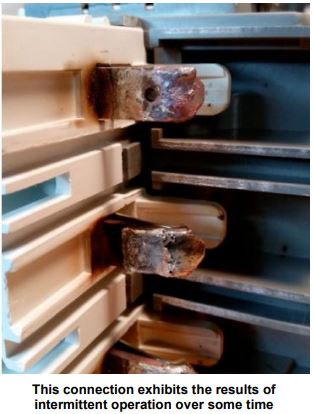Building It Right The First Time

[December 2019] Over the years, the dynamics of broadcast engineering have changed in many ways, not only in terms of the workload (how many stations, tasks), manufacturers’ support, but also the need for training/mentoring.
And here I am again, offering advice or ideas for those of you who might be doing the installation of new equipment for the first time.
You old timers can read this and chuckle, thinking about what I have missed here, or recalling what you may have missed yourself, years ago.
Still, the reality is that so much has changed over the four decades that I have been involved in electronics – broadcast in particular.
But the one thing that has remained constant is the need for new installations to be done well.
To be required to go back often to clean up, or locate problems that could/should have been resolved or eliminated upon initial installation is, at the least, a nuisance. And at worst, it perhaps may be a liability on your reputation and/or bank account.
A Variety of Useful Tips
To start with, I let me be clear: I am not offering an exhaustive “how to” check list here.
Rather, my purpose is to share some of the various subtle, but important, things I have run into that you may want to consider as you go about planning a new, or replacement installation.
So, let us start by figuring that you are replacing something: I guess an old transmitter might be a good place to start. So someone (you, “management,” director of engineering, someone) selects a manufacturer and the necessary options and places the order.
Now your job is to make the installation go as smoothly and quickly as you can, ensuring your installation practices conclude with a transmitter that will work as reliably as possible with an excellent signal.
Pre-Planning the Install
Here are some of the first things for which you need answers:
- Do you have room to accompany both the old and new chassis at the same time in the building? If not, then how quickly can you get the old out and the new in?
- Who can (or actually will) assist?
- Presumably (almost certainly!), the new one will require less power from the power utility than the old. However, changing the disconnect (for example) from a 3-phase 60A to a 3-phase 30A might be just a matter of changing fuses, or breakers. Or not.
- Then you will probably need an electrician to change out or install a new panel alongside the old one. This will certainly make the switchover much easier, by not having to change power connections as well as audio, telemetry, control and RF at the same time.
The System Ground
Before you start the installation, it would be a good idea to look at the building grounding.
There might be some improvements needed that have not been taken care of previously. As well, this is a good time to cleanup any of the little things you have been meaning to get around to in the past, but just have not had the time.
For example, you might find the remains of a quick fix from a prior installation.

Sheet metal screws are not enough to ensure a solid ground
Over time, factors such as oxidation, vibration, etc. could make this connection problematic.
Or, should we consider the word “crimped?” There are a number of levels of crimping, some of which, upon inspection, could make you very uneasy.

Are there any of these sort of connections hiding somewhere behind your transmission system?
As with soft solder techniques, silver soldering should employ solid mechanical connections – and then the soldering. If possible and available, you will find cadwelding is better in the long run.
The Right Power Connections
Next you may want to inspect all electrical power connections.
Here is why:
When you consider it closely, all electric/electronic connections are mechanical. Everything from the tiny gold wires inside the ICs and transistors to 300 Amp plate contactors relies on mechanical integrity for proper, reliable operation.
When loose connections heat up and cool off, they will expand/contract and – over time – loosen even more, which causes them to heat up further – and eventually fail, sometimes quite catastrophically.
Truthfully, clean and tight connections everywhere go a long way toward ensuring the reliable operation of any and every piece of electronic equipment.
Otherwise, you might end up with some nasty, contacts:

Know What is “Normal”
There are a few ways you can go about checking breakers, fuses, and any other electrical connections for solid operation.
Those handheld IR thermometers sold at electrical suppliers, hardware stores, etc. work well enough, I think. Keep a record of each connection which was checked (date & time) and the associated load if you want to be quite careful about it. If you really want to delve into this, there are a variety of infrared (IR) cameras available, but are generally much more expensive than the little IR thermometers.
Slightly loosening then re-tightening each connection is another method I use to just “reset” all connections occasionally.
Keep Your Cool
Cooling is quite important to equipment longevity, which then leads to station uptime, which then leads to a much lower loss of income.
While you are deciding on the details of specifying which transmitter to purchase, (re)considering the current cooling methods and capacity is an excellent idea. I prefer a sealed building in all cases. If that is not “in the budget,” then be sure you make it clear that down time for cleaning and repairs (often at the worst time) is not only likely, but certain.
I recommend you consult an HVAC company. Provide the cooling requirements of the equipment (all equipment in the building) to them. They should be quite able to adequately spec the needed cooling.
The Right Place
Let us see, what might be next to consider? How about getting the new equipment into (and the old out) of the building?
First, specify the delivery address.
This would seem to be quite obvious, but be sure the manufacturer and the shipping company knows exactly where you want it dropped off.
If it ends up at the studio, and (of course) the transmitter site is 15 miles out of town, now you will have to make arrangements for that delivery.
If they will bring it into the building, great. If not then you will probably have to arrange for a local company (moving and storage companies are good for this) to do the work. Yeah, you and a couple of buddies could perhaps do it, but if it is contracted to a company (which is insured) then any damage which may occur during this short trip will be covered – and not by your own checkbook!
Out With the Old?
Now, what to do with the old transmitter? That is, unless you are going to keep it as an auxiliary.
Maybe it is worth selling, depending on condition and vintage. Do some research (and I do not mean just looking on eBay). Ask the transmitter vendor if they assist with disposal, check The BDR for possibilities to sell.
If it is not worth the time to sell commercially, there are other options. A quick search led me to an amateur AM transmitter website: http://amfone.net/AMNorthwest/. Another option: you can offer to part it out (lots of work) or haul it to the local metal recycle company. Again, you will have to figure out who will do the heavy lifting.
However, before you scrap it out, take a good look at all the hardware inside. There have been many times over the past 40 years when I have needed a specific “something” that would not be available in town, regardless of the number of hardware stores around. And worse, now that Radio Shack has pulled out of many areas, even small electronic parts often are a couple days (or more) away.
Do not keep everything you see (just how many parts bins do you want to buy and fill), but look over your current inventory of parts and decide what may be useful.
That should be enough “engineering reminisceing” for now, anyway. And I can go back to planning next summer’s adventures (while waiting for this weekend’s snowstorm way up here in the northern plains).

Take it from me, it is always good to mix physical exercise in with all the mental gymnastics you will encounter in the radio engineering business – it really does help to keep your mental health in good condition.”!
– – –
Dave Dunsmoor retired after 35 years as an FAA technician and radio engineer in Minot, ND. He keeps busy hiking, restoring aircraft, and still doing a bit of contract engineering. Contact Dave at:mrfixit@min.midco.net
